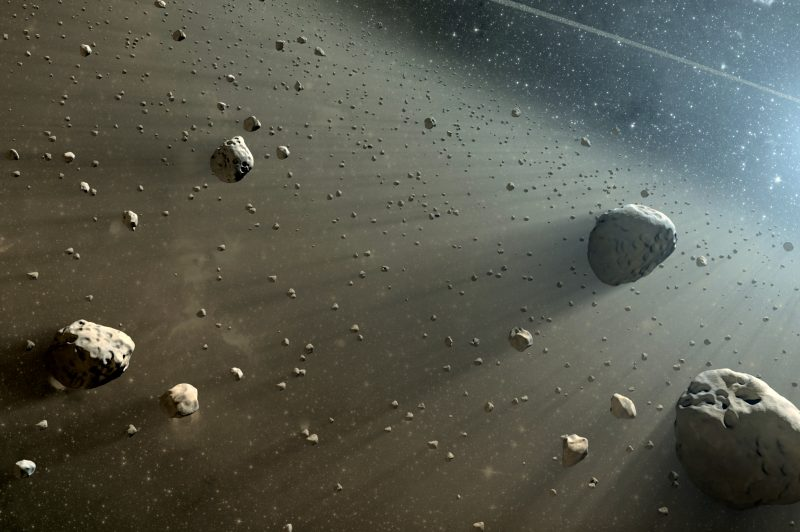Our solar system has existed for roughly 4.5 billion years—a long time, especially given that humans have only walked the Earth for the last 300,000 years. To gain an understanding of the solar system as a whole, scientists often follow clues that offer insights into the history of the universe. Such clues often come in the form of space rocks, which tell us a lot about the origin of our solar system and how it was when it took shape.
There are three main types of space rocks: Asteroids, comets, and meteoroids. Though the terms are often used interchangeably, the rocks themselves are vastly different.
Asteroids
Much smaller than planets, asteroids are rocky objects that orbit the Sun. They are composed of rocks and metals left over from the formation of the four planets closest to the Sun—referred to as the inner solar system—when a huge cloud of dust and gas collapsed to form the giant star. Unlike most spherical space bodies, asteroids are oddly shaped, with craters and erratic orbits. Ranging from the size of a boulder to hundreds of kilometres in diameter, they inhabit a region between Mars and Jupiter known as the Asteroid Belt, where they are sometimes pulled into Earth’s orbit. Ceres, often called a dwarf planet, is the largest known asteroid in the Asteroid Belt, measuring almost 1,000 kilometres across.
Apart from gaining information on the chemical and physical properties of asteroids, NASA’s missions to study these objects have been essential in detecting the locations of other asteroids and predicting the potential dangers that they pose to Earth.
Comets
Ranging from the size of a house to 10 kilometres in diameter, comets are composed of not only rock and dust, but ice and gas as well. Scientists believe that they originate in the Oort Cloud, a very cold region that surrounds the solar system, and the Kuiper Belt, which lies just beyond Neptune. Comets are believed to be remnants from the formation of the outer planets: Jupiter, Saturn, Uranus, and Neptune. Although they were formed around the same time as asteroids, comets were created in colder regions of space where water could freeze.
Comets orbit around the Sun, but in a more elliptical manner than their asteroid counterparts. When pulled in a closer orbit, the icy nucleus of the comet starts to evaporate, and the ice and gasses boil off and surround the nucleus to form a cloud called a coma. The dust and gas is pushed away from the coma by solar winds to form the tail of the comet, which can reach up to 150 million kilometres long. Each time the comet passes close to the Sun, it loses some of its material. Over time, it will break up and disappear completely. If it intersects Earth’s orbit, the dust and debris left in the comet’s wake will fall into the Earth’s atmosphere, becoming meteoroids.
Meteoroids
Smaller than an asteroid or comet, a meteoroid is a chunk of rock that orbits the Sun and has broken off from a comet or asteroid. When a meteoroid enters Earth’s atmosphere, the friction causes a streak of light and vaporizes the meteoroid to form a meteor, which is also known as a shooting star. Meteor showers describe the phenomenon of several meteoroids burning up in Earth’s atmosphere. If the meteoroid survives its journey through Earth’s atmosphere and lands on the ground, it is termed a meteorite.
According to NASA, while 100 tonnes of tiny dust and sand particles attack Earth every day from outer space, meteorites the size of a football field only hit Earth once every 2,000 years. Every few million years, a space rock large enough to threaten civilization comes along. Scientists estimate that the two-billion-year-old Vredefort crater in South Africa, now 100 kilometres wide, was originally three times that size.
Large or small, space rocks do not generally pose a threat to humans. Rather, they serve as important tools for scientists to understand our solar system and beyond.








